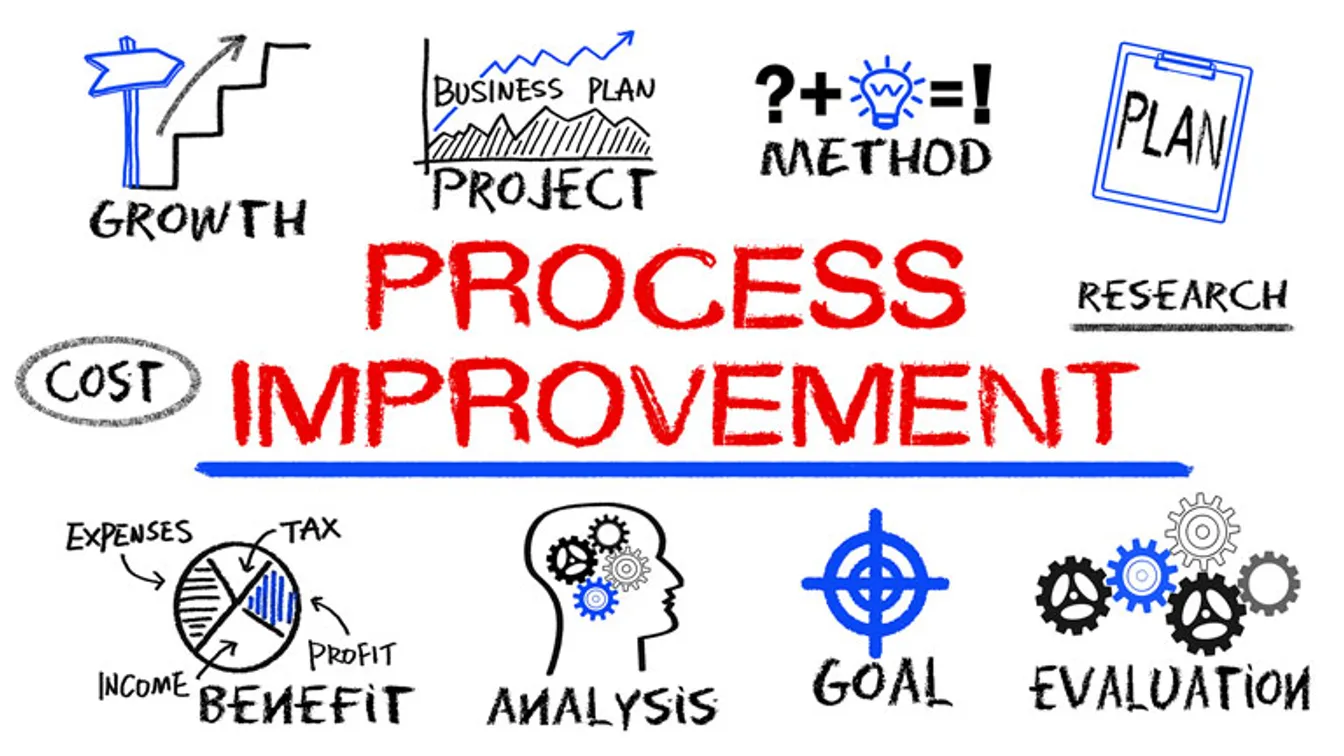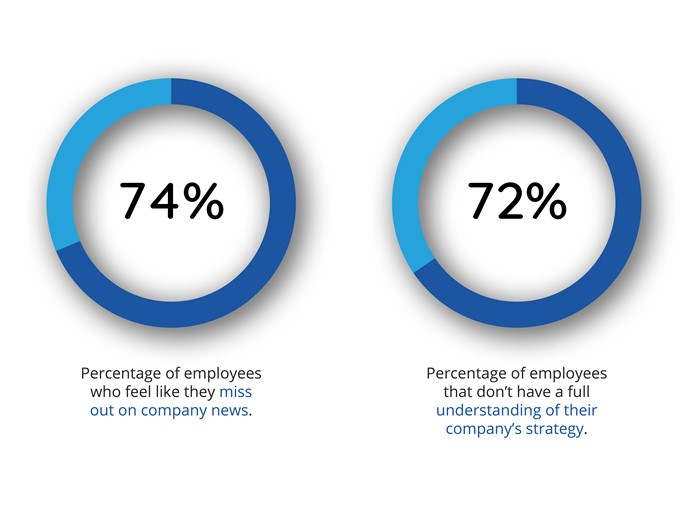7-Step Guide to Increasing Your Process Efficiency And Transforming Workflow
คุณพร้อมที่จะเปลี่ยนวิธีการจัดการงานหรือไม่ เพื่อนๆของเราที่ Dialpad รู้ว่าคุณสามารถปรับปรุงประสิทธิภาพโดยการตาม 7 ขั้นตอนง่ายๆ
การรักษากระบวนการที่มีประสิทธิภาพและการทำงานอย่างเข้มข้นเป็นสิ่งสำคัญในการดำเนินธุรกิจที่ประสบความสำเร็จ
ไม่ว่าคุณจะดำเนินธุรกิจที่มีพนักงานหลายร้อยคนหรือจะบริหาร สำนักงานกฎหมายเสมือนจริง ด้วยทีมงานขนาดเล็ก กระบวนการธุรกิจคือรากฐานของการดำเนินงานของบริษัทของคุณ นี่คือเหตุผลที่สำคัญที่คุณควรตรวจสอบกระบวนการและดำเนินการที่จำเป็นเพื่อปรับปรุงอย่างนาฬิกา
และเมื่อสถานการณ์การทำงานกำลังกลับสู่ปกติ ตอนนี้คือเวลาที่เหมาะสมที่สุดในการทำเช่นนี้
คู่มือนี้ครอบคลุมเจ็ดขั้นตอนที่คุณควรทำตามเพื่อปรับปรุงกระบวนการและ ประสิทธิภาพของพนักงาน การทำตามขั้นตอนเหล่านี้จะช่วยเพิ่มผลิตภาพในทีมของคุณ และจะช่วยให้งานของคุณเป็นไปตามที่ถูกต้อง
เผชิญกับอุปสรรค
ก่อนที่เราจะไปสู่คู่มือเจ็ดขั้นตอนของเรา การระบุที่ความท้าทายที่อาจเจอในการดำเนินการการปรับปรุงกระบวนการนั้นเป็นสิ่งสำคัญ
สองปัญหาหลักที่อาจพบคือการมีนิสัยอิ่มตัวและขาดทรัพยากร
การอิ่มตัว
มันเป็นสิ่งธรรมดาที่คนต้องการที่จะอยู่ในโซนสบายๆ เมื่อเรื่องความปรับปรุงกระบวนการเข้ามา อิ่มตัวอาจส่งผลกระทบให้คุณย้อนกลับ
พนักงาน และบางทีอาจเป็นผู้บริหาร อาจพยายามต้านการเปลี่ยนแปลงเนื่องจากพวกเขารู้สึกสบายๆกับกระบวนการปัจจุบัน พวกเขาอาจไม่พร้อมที่จะลงความคิดทุกรายในการประเมินและปรับปรุงกระบวนการที่มีอยู่
ตัวอย่างเช่น หากพนักงานพอใจกับระบบลงเวลาปัจจุบันพวกเขาอาจต่อต้านไอเดียใด ๆ เพื่อนำเข้าเครื่องคิดเวลา เครื่องคิดเวลาเข้างาน ใหม่ที่ซึ่งคุณเชื่อว่าจะทำให้การบันทึกเวลามีประสิทธิภาพขึ้น
นี้อาจทำให้ความคืบหน้าของคุณช้าหรือหยุดเท่าไหร่ก็ได้ เพราะฉะนั้นสิ่งสำคัญคือต้องแก้ไขปัญหานี้ให้ถึงโดยตรง ให้แน่ใจว่าทีมของคุณรู้ว่าการปรับปรุงกระบวนการมีโอกาสที่จะทำให้งานของพวกเขาง่ายขึ้น
ด้วยกระบวนการที่ดีขึ้นที่เข้ามาแทนที่ การทำงานจะดำเนินไปได้ด้วยความราบรื่นและความกดดันที่อาจจะทำให้พนักงานสามารถทำงานได้ง่ายขึ้น
ขาดทรัพยากร
ก่อนที่คุณจะเข้าร่วมทำการปรับปรุงกระบวนการที่มีอยู่ จำเป็นต้องตรวจสอบว่าคุณมีทรัพยากรที่จำเป็นอย่างไร
การทำปรับปรุงอาจใช้เวลา ค่าใช้จ่ายและแรงงานมาก ดังนั้นควรทำการกำหนดว่าคุณสามารถดำเนินการหรือไม่ ตัวอย่างเช่น ถ้าคุณเชื่อว่าคุณต้องสร้าง แพลตฟอร์ม CRM ที่เหมาะสำหรับธุรกิจขนาดเล็ก คุณอาจต้องตรวจสอบงบประมาณและตัดสินใจว่าคุณจะต้องจ้างพนักงานเพิ่มเพื่อดำเนินการระบบหรือไม่
ความคิดนี้อาจทำให้ธุรกิจบางรายเบื่อใจและนำพาไปสู่การล่าช้าเพื่อปรับปรุงพวกเขาตลอดไป
อย่างไรก็ตาม ควรระบุว่า สำหรับการเปลี่ยนแปลงครั้งหนึ่ง การปรับปรุงกระบวนการสามารถดึงดูดความลงทุนให้มีผลตอบแทนมากมาย ดังนั้น การดูคราวหน้าอาจดูอย่างน่ากลัวเดี๋ยวนี้ แต่คุณจะขอบคุณตัวเองในภายหลัง
Caption for this image. มันน่าสุด!วิธีเพิ่มประสิทธิภาพในกระบวนการ: 7 ขั้นตอน
เมื่อคุณประเมินและแก้ไขปัญหาที่พบแล้ว ถึงเวลาทำงาน
การปฏิบัติตามขั้นตอนเหล่านี้จะช่วยให้คุณเพิ่มกระบวนการอย่างมีประสิทธิภาพ ซึ่งจะช่วยในการเพิ่มผลิตภัณฑ์และปรับปรุงการทำงานได้
1. ประเมินกระบวนการปัจจุบัน
เพื่อกำหนดว่ากระบวนการใดต้องปรับปรุงและทำการเปลี่ยนการปฏิบัติเราจำเป็นต้องประเมินกระบวนการทั้งหมดที่มีอยู่
เมื่อมองหาที่ทำงาน ให้มุ่งเน้นที่ความเป็นไปได้ของมัน ตัวอย่างเช่น ยอดขาย อัตราการเก็บรักษา และคะแนน KPI บนเว็บไซต์อาจถูกสอบสวน หากดูเหมือนว่าคุณไม่ได้รับผลตอบแทนมากมายสำหรับกระบวนการ อาจเป็นเพราะมันเก่าแล้ว ยังองค์ประสงค์ที่เฉพาะเจาะจงของกระบวนการเพื่อระบุสิ่งที่ไม่จำเป็น
พบว่ากระบวนการที่ทำงานและข้อหรือแหล่งการที่ทำงานไม่ดีสามารถช่วยให้คุณจำกัดรายการ
2. ระบบค้นหากระบวนการที่เลือก
การวิเคราะห์กระบวนการที่น่าสงสัยช่วยให้คุณเข้าใจอย่างครบถ้วนและตีความ จากนั้นคุณจะสามารถตัดสินใจอย่างมีเหตุผลเกี่ยวกับวิธีการปรับปรุงมัน
แผนขั้นตอนคือภาพของกระบวนการ จากนั้นคุณจะได้ความเข้าใจดีขึ้นเกี่ยวกับงานที่มีอยู่ ระบบที่ใช้ และพนักงานที่รับผิดชอบกระบวนการนั้นๆ นี่คือวิธีที่ยอดเยี่ยมในการดูและการแยกวิเคราะห์งานและให้จุดเริ่มต้นในการคิดถึงวิธีการปรับปรุงมัน
มีเครื่องมือที่คุณสามารถลงทุนเพื่อทำให้ขั้นตอนการทำแผนภาพมีความรวดเร็วและง่ายมากขึ้น คุณสามารถลงทุนใน การพัฒนาแอปมือถือ และสร้างแอปที่คุณสามารถติดตามงาน กำหนดงาน และส่งการติดตามเมื่อจำเป็น อย่างไรก็ตาม หากคุณก็ไม่มีเงินลงทุนในเครื่องมือแผนที่หรือเวลาที่จะสร้างแอปของตัวเอง ไม่ต้องกลัว - การผสมผสานกระดาษและปากกาอย่างง่ายก็เพียงพอ
3. ถามคำถามที่ถูกต้อง
เป็นเจ้าของธุรกิจหรือผู้จัดการ คุณจะรู้มากมายเกี่ยวกับแต่ละกระบวนการและการใช้งานของมัน จริงๆแล้ว พนักงานของคุณทำงานกับมันอยู่ทุกวันและอาจจะรู้มากกว่านั้น
ถามพนักงานของคุณเกี่ยวกับกระบวนการโดยละเอียด ให้พวกเขายืนยันข้อมูลในแผนกระบวนการของคุณเพื่อให้แน่ใจว่าคุณไม่พลาดอะไร เช่นกัน คุณอาจรู้ว่ามีขั้นตอนใดบ้างในกระบวนการ แต่คุณอาจไม่รู้ถึงช่องว่างใดที่ต้องเติม
สมมติว่าคุณกำลังดำเนินการร้านค้าออนไลน์ขนาดกลางและต้องการประเมินว่าสถานการณ์การทำธุรกิจของคุณเป็นอย่างไร คุณอาจรุ้ว่ามีขั้นตอนทั้งหมดที่ช่วยในการประมวลผลข้อมูลการขาย แต่คุณอาจไม่รู้ว่าระบบปัจจุบันมีปัญหากับการจัดการจำนวนสินค้าที่มากขึ้นในช่วงเวลาช้อปปีใหม่
การพูดคุยกับพนักงานของคุณจะช่วยให้คุณรู้จักปัญหานี้มากขึ้น และช่วยให้คุณดำเนินการแก้ไขตามที่เหมาะสม บางทีคุณอาจต้องพิจารณาโครงสร้างคลาวด์ของคุณและพิจารณาการก้าวหน้าไปยัง คลาวด์ฮายบริด
ไม่ว่าจะทำอะไร ความช่วยเหลือจากพนักงานของคุณจะเป็นสิ่งสำคัญในการตีความดังเดิมร์ผลลัพธ์
4. ประเมินการกระทำของกระบวนการที่มีอยู่แล้ว
การประเมินการกระทำของกระบวนการหมายถึงการกำหนดว่ากระบวนการสามารถทำงานได้อย่างราบรื่นและมีประสิทธิภาพอย่างไร นี้จะช่วยให้คุณตัดสินใจว่าจะปรับปรุงอะไรเพื่อเสริมสร้างกระบวนการ
บางทีมีงานใดบางงานในกระบวนการที่ซับซ้อนและใช้เวลามาก การทำให้มันเร็วขึ้นไม่เท่านั้น แต่ยังช่วยให้มีเวลาว่างของพนักงานบางคนเพื่อให้พวกเขาสามารถโฟกัสกับงานอื่น ๆ ได้
คุณยังสามารถดูที่องค์ประกอบของกระบวนการบางอย่างที่อาจเป็นซ้ำซ้อนและต้องการอัตโนมัติ บางทีกระบวนการจัดการสั่งซื้อของคุณถูกจัดการโดยทีมพนักงาน แต่สามารถจะยกเลิกโดยระบบจัดการสั่งซื้อ (OMS) ในส่วนมาก
ในกรณีนี้ คุณสามารถพิจารณาลงทุนใน ซอฟต์แวร์จัดการสั่งซื้อ ซึ่งจะกำจัดกระบวนการหนึ่งที่เลิกใช้และช่วยเพิ่มผลิตภาพของพนักงาน
5. ทำการเปลี่ยนแปลงเพื่อเสริมสร้างกระบวนการ
ตอนนี้หลังจากที่คุณกำหนดว่ากระบวนการที่มีต่อไปเป็นอย่างไร ถึงเวลาที่จะทำการเปลี่ยนแปลงเพื่อเป็นเวอร์ชั่นที่ดียิ่งขึ้น
เริ่มต้นโดยทำรายการของข้อบกพร่องทุกอย่างที่คุณค้นพบและรวมทีมผู้จัดการของคุณมาคิดหาทางออก
เมื่อคุณได้สร้างรายการของวิธีการแก้ไขที่เป็นไปได้ฝึกทันที-ในครั้งนี้คิดถึงว่าแต่ละข้อเสนอมีผลมายังไงต่อกระบวนการโดยรวมและธุรกิจ มันจะทำให้เปลี่ยนแปลงตามผลลัพธ์หลักหรือไม่ คุณต้องทำการเปลี่ยนแปลงเพิ่มเพื่อให้เข้ากับ
เช่น เช่น คุณตัดสินใจว่าการย้ายข้อมูลที่มีอยู่ไปยังแพล็ตฟอร์มอื่นจะทำให้มันปลอดภัยกว่าและดีกว่าสำหรับธุรกิจของคุณในอนาคต ไม่ควรละเมอุถึงความเสี่ยงเข้าไปในการย้ายข้อมูลของคุณ
ต้องช่วยปกคลุมงานเบื้องต้น ถ้าพบว่าการปรับปรุงไม่คุ้มค่าในการลงทุนกลับไปตั้งร้อยกับการคิดใหม่อีกครั้ง
เปิดใจและเขียนทุกอย่าง แต่ละความคิดควรนับถือ
6. ติดต่อทีมของคุณ
เมื่อการสำรงการเปลี่ยนแปลงได้สิ้นสุดลง และกระบวนการได้รับการปรับปรุงคุณต้องแจ้งให้พนักงานทราบ
ถ้าคุณเลือกที่จะใช้ ซอฟต์แวร์จัดการกรอบการทำงาน ใหม่ ตลอกเสร็จพนักงานจำเป็นต้องทราบว่าจะเข้าถึงและใช้ระบบใหม่ด้วย
ใช้ช่องสื่อสารเท่าที่จำเป็นและรวมข้อมูลให้มากที่สุด คุณไม่ต้องการให้มีความสับสนหรือความสงสัย
เขียนทำเล็ตที่มีข้อมูลทั่วถึงและจัดการการอบรมเพื่อให้ทุกคนอยู่ในหน้าเดียวกัน อาจคุ้มค่าหาวิธี ปรับปรุงการสื่อสารกับทีมห่างไกล
7. ตรวจสอบกระบวนการใหม่
หนึ่งในขั้นตอนที่สำคัญที่สุดในการปรับปรุงกระบวนการคือการตรวจสอบการเปลี่ยนแปลงที่คุณได้ทำ ติดตามกระบวนการใหม่อย่างใกล้ชิดและตัดสินใจว่าการเปลี่ยนแปลงเหล่านั้นมีผลกระทบที่ดีต่อธุรกิจของคุณหรือไม่
หากคุณเปลี่ยนกระบวนการการมอบหมายงานของคุณโดยการนำเข้าแอปพลิเคชันโทรศัพท์มือถือสำหรับธุรกิจการจัดการงาน ดูว่าการเปลี่ยนแปลงนี้มีผลต่อความเร็วที่งานถูกส่งมอบ, ยอมรับ และดำเนินการเสร็จ
คุณเห็นผลลัพธ์ที่ดีกว่าหรือไม่ จำนวนข้อผิดพลาดน้อยลงหรือไม่ พนักงานของคุณมีประสิทธิภาพมากขึ้นหรือไม่
การตอบคำถามเหล่านี้จะช่วยให้คุณได้สถิติที่จำเป็นสำหรับการกำหนดว่าการเปลี่ยนแปลงได้ปรับปรุงกระบวนการของคุณ
จำไว้ว่าการก้าวหน้าเป็นเรื่อผัน โลกธุรกิจเปลี่ยนไปอย่างต่อเนื่อง เพราะฉะนั้น กระบวนการใหม่ของคุณจะต้องถูกตรวจสอบอีกครั้งในอนาคตเพื่อปรับตัวให้ทันสมัย
แนวทางประมาณการ
อาจจะถือว่ามีความพยายามมากอยู่ แต่ยืนด้วยว่ากระบวนการภายในธุรกิจของคุณทั้งหมดมีประสิทธิภาพในระดับที่สามารถจะทำได้ก็สำคัญต่อการอยู่ในสันดอนของอุตสาหกรรมของคุณ
ไม่ว่าคุณจะตัดสินใจรวมๆกับโปรแกรมประยุกต์การบริหารทรัพยากรมนุษย์โดยการอัตโนมัติ หรือกำลังพยายามคิดถึงวิธีเชียวยางต่างๆที่เหมาะสมกับธุรกิจเพื่อพัฒนาการสื่อสารระหว่างทีมนั้น ขั้นตอนเหล่านี้สามารถช่วยได้
ใช้คู่มือนี้เมื่อคุณต้องการ ไม่เพียงว่าจะเป็นประ๊การต่อทีมของคุณ แต่ยังทำให้ลูกค้าของคุณมีความสุข ด้วย
การรักษากระบวนการที่มีประสิทธิภาพและการทำงานอย่างเข้มข้นเป็นสิ่งสำคัญในการดำเนินธุรกิจที่ประสบความสำเร็จ
ไม่ว่าคุณจะดำเนินธุรกิจที่มีพนักงานหลายร้อยคนหรือจะบริหาร สำนักงานกฎหมายเสมือนจริง ด้วยทีมงานขนาดเล็ก กระบวนการธุรกิจคือรากฐานของการดำเนินงานของบริษัทของคุณ นี่คือเหตุผลที่สำคัญที่คุณควรตรวจสอบกระบวนการและดำเนินการที่จำเป็นเพื่อปรับปรุงอย่างนาฬิกา
และเมื่อสถานการณ์การทำงานกำลังกลับสู่ปกติ ตอนนี้คือเวลาที่เหมาะสมที่สุดในการทำเช่นนี้
คู่มือนี้ครอบคลุมเจ็ดขั้นตอนที่คุณควรทำตามเพื่อปรับปรุงกระบวนการและ ประสิทธิภาพของพนักงาน การทำตามขั้นตอนเหล่านี้จะช่วยเพิ่มผลิตภาพในทีมของคุณ และจะช่วยให้งานของคุณเป็นไปตามที่ถูกต้อง
เผชิญกับอุปสรรค
ก่อนที่เราจะไปสู่คู่มือเจ็ดขั้นตอนของเรา การระบุที่ความท้าทายที่อาจเจอในการดำเนินการการปรับปรุงกระบวนการนั้นเป็นสิ่งสำคัญ
สองปัญหาหลักที่อาจพบคือการมีนิสัยอิ่มตัวและขาดทรัพยากร
การอิ่มตัว
มันเป็นสิ่งธรรมดาที่คนต้องการที่จะอยู่ในโซนสบายๆ เมื่อเรื่องความปรับปรุงกระบวนการเข้ามา อิ่มตัวอาจส่งผลกระทบให้คุณย้อนกลับ
พนักงาน และบางทีอาจเป็นผู้บริหาร อาจพยายามต้านการเปลี่ยนแปลงเนื่องจากพวกเขารู้สึกสบายๆกับกระบวนการปัจจุบัน พวกเขาอาจไม่พร้อมที่จะลงความคิดทุกรายในการประเมินและปรับปรุงกระบวนการที่มีอยู่
ตัวอย่างเช่น หากพนักงานพอใจกับระบบลงเวลาปัจจุบันพวกเขาอาจต่อต้านไอเดียใด ๆ เพื่อนำเข้าเครื่องคิดเวลา เครื่องคิดเวลาเข้างาน ใหม่ที่ซึ่งคุณเชื่อว่าจะทำให้การบันทึกเวลามีประสิทธิภาพขึ้น
นี้อาจทำให้ความคืบหน้าของคุณช้าหรือหยุดเท่าไหร่ก็ได้ เพราะฉะนั้นสิ่งสำคัญคือต้องแก้ไขปัญหานี้ให้ถึงโดยตรง ให้แน่ใจว่าทีมของคุณรู้ว่าการปรับปรุงกระบวนการมีโอกาสที่จะทำให้งานของพวกเขาง่ายขึ้น
ด้วยกระบวนการที่ดีขึ้นที่เข้ามาแทนที่ การทำงานจะดำเนินไปได้ด้วยความราบรื่นและความกดดันที่อาจจะทำให้พนักงานสามารถทำงานได้ง่ายขึ้น
ขาดทรัพยากร
ก่อนที่คุณจะเข้าร่วมทำการปรับปรุงกระบวนการที่มีอยู่ จำเป็นต้องตรวจสอบว่าคุณมีทรัพยากรที่จำเป็นอย่างไร
การทำปรับปรุงอาจใช้เวลา ค่าใช้จ่ายและแรงงานมาก ดังนั้นควรทำการกำหนดว่าคุณสามารถดำเนินการหรือไม่ ตัวอย่างเช่น ถ้าคุณเชื่อว่าคุณต้องสร้าง แพลตฟอร์ม CRM ที่เหมาะสำหรับธุรกิจขนาดเล็ก คุณอาจต้องตรวจสอบงบประมาณและตัดสินใจว่าคุณจะต้องจ้างพนักงานเพิ่มเพื่อดำเนินการระบบหรือไม่
ความคิดนี้อาจทำให้ธุรกิจบางรายเบื่อใจและนำพาไปสู่การล่าช้าเพื่อปรับปรุงพวกเขาตลอดไป
อย่างไรก็ตาม ควรระบุว่า สำหรับการเปลี่ยนแปลงครั้งหนึ่ง การปรับปรุงกระบวนการสามารถดึงดูดความลงทุนให้มีผลตอบแทนมากมาย ดังนั้น การดูคราวหน้าอาจดูอย่างน่ากลัวเดี๋ยวนี้ แต่คุณจะขอบคุณตัวเองในภายหลัง
Caption for this image. มันน่าสุด!วิธีเพิ่มประสิทธิภาพในกระบวนการ: 7 ขั้นตอน
เมื่อคุณประเมินและแก้ไขปัญหาที่พบแล้ว ถึงเวลาทำงาน
การปฏิบัติตามขั้นตอนเหล่านี้จะช่วยให้คุณเพิ่มกระบวนการอย่างมีประสิทธิภาพ ซึ่งจะช่วยในการเพิ่มผลิตภัณฑ์และปรับปรุงการทำงานได้
1. ประเมินกระบวนการปัจจุบัน
เพื่อกำหนดว่ากระบวนการใดต้องปรับปรุงและทำการเปลี่ยนการปฏิบัติเราจำเป็นต้องประเมินกระบวนการทั้งหมดที่มีอยู่
เมื่อมองหาที่ทำงาน ให้มุ่งเน้นที่ความเป็นไปได้ของมัน ตัวอย่างเช่น ยอดขาย อัตราการเก็บรักษา และคะแนน KPI บนเว็บไซต์อาจถูกสอบสวน หากดูเหมือนว่าคุณไม่ได้รับผลตอบแทนมากมายสำหรับกระบวนการ อาจเป็นเพราะมันเก่าแล้ว ยังองค์ประสงค์ที่เฉพาะเจาะจงของกระบวนการเพื่อระบุสิ่งที่ไม่จำเป็น
พบว่ากระบวนการที่ทำงานและข้อหรือแหล่งการที่ทำงานไม่ดีสามารถช่วยให้คุณจำกัดรายการ
2. ระบบค้นหากระบวนการที่เลือก
การวิเคราะห์กระบวนการที่น่าสงสัยช่วยให้คุณเข้าใจอย่างครบถ้วนและตีความ จากนั้นคุณจะสามารถตัดสินใจอย่างมีเหตุผลเกี่ยวกับวิธีการปรับปรุงมัน
แผนขั้นตอนคือภาพของกระบวนการ จากนั้นคุณจะได้ความเข้าใจดีขึ้นเกี่ยวกับงานที่มีอยู่ ระบบที่ใช้ และพนักงานที่รับผิดชอบกระบวนการนั้นๆ นี่คือวิธีที่ยอดเยี่ยมในการดูและการแยกวิเคราะห์งานและให้จุดเริ่มต้นในการคิดถึงวิธีการปรับปรุงมัน
มีเครื่องมือที่คุณสามารถลงทุนเพื่อทำให้ขั้นตอนการทำแผนภาพมีความรวดเร็วและง่ายมากขึ้น คุณสามารถลงทุนใน การพัฒนาแอปมือถือ และสร้างแอปที่คุณสามารถติดตามงาน กำหนดงาน และส่งการติดตามเมื่อจำเป็น อย่างไรก็ตาม หากคุณก็ไม่มีเงินลงทุนในเครื่องมือแผนที่หรือเวลาที่จะสร้างแอปของตัวเอง ไม่ต้องกลัว - การผสมผสานกระดาษและปากกาอย่างง่ายก็เพียงพอ
3. ถามคำถามที่ถูกต้อง
เป็นเจ้าของธุรกิจหรือผู้จัดการ คุณจะรู้มากมายเกี่ยวกับแต่ละกระบวนการและการใช้งานของมัน จริงๆแล้ว พนักงานของคุณทำงานกับมันอยู่ทุกวันและอาจจะรู้มากกว่านั้น
ถามพนักงานของคุณเกี่ยวกับกระบวนการโดยละเอียด ให้พวกเขายืนยันข้อมูลในแผนกระบวนการของคุณเพื่อให้แน่ใจว่าคุณไม่พลาดอะไร เช่นกัน คุณอาจรู้ว่ามีขั้นตอนใดบ้างในกระบวนการ แต่คุณอาจไม่รู้ถึงช่องว่างใดที่ต้องเติม
สมมติว่าคุณกำลังดำเนินการร้านค้าออนไลน์ขนาดกลางและต้องการประเมินว่าสถานการณ์การทำธุรกิจของคุณเป็นอย่างไร คุณอาจรุ้ว่ามีขั้นตอนทั้งหมดที่ช่วยในการประมวลผลข้อมูลการขาย แต่คุณอาจไม่รู้ว่าระบบปัจจุบันมีปัญหากับการจัดการจำนวนสินค้าที่มากขึ้นในช่วงเวลาช้อปปีใหม่
การพูดคุยกับพนักงานของคุณจะช่วยให้คุณรู้จักปัญหานี้มากขึ้น และช่วยให้คุณดำเนินการแก้ไขตามที่เหมาะสม บางทีคุณอาจต้องพิจารณาโครงสร้างคลาวด์ของคุณและพิจารณาการก้าวหน้าไปยัง คลาวด์ฮายบริด
ไม่ว่าจะทำอะไร ความช่วยเหลือจากพนักงานของคุณจะเป็นสิ่งสำคัญในการตีความดังเดิมร์ผลลัพธ์
4. ประเมินการกระทำของกระบวนการที่มีอยู่แล้ว
การประเมินการกระทำของกระบวนการหมายถึงการกำหนดว่ากระบวนการสามารถทำงานได้อย่างราบรื่นและมีประสิทธิภาพอย่างไร นี้จะช่วยให้คุณตัดสินใจว่าจะปรับปรุงอะไรเพื่อเสริมสร้างกระบวนการ
บางทีมีงานใดบางงานในกระบวนการที่ซับซ้อนและใช้เวลามาก การทำให้มันเร็วขึ้นไม่เท่านั้น แต่ยังช่วยให้มีเวลาว่างของพนักงานบางคนเพื่อให้พวกเขาสามารถโฟกัสกับงานอื่น ๆ ได้
คุณยังสามารถดูที่องค์ประกอบของกระบวนการบางอย่างที่อาจเป็นซ้ำซ้อนและต้องการอัตโนมัติ บางทีกระบวนการจัดการสั่งซื้อของคุณถูกจัดการโดยทีมพนักงาน แต่สามารถจะยกเลิกโดยระบบจัดการสั่งซื้อ (OMS) ในส่วนมาก
ในกรณีนี้ คุณสามารถพิจารณาลงทุนใน ซอฟต์แวร์จัดการสั่งซื้อ ซึ่งจะกำจัดกระบวนการหนึ่งที่เลิกใช้และช่วยเพิ่มผลิตภาพของพนักงาน
5. ทำการเปลี่ยนแปลงเพื่อเสริมสร้างกระบวนการ
ตอนนี้หลังจากที่คุณกำหนดว่ากระบวนการที่มีต่อไปเป็นอย่างไร ถึงเวลาที่จะทำการเปลี่ยนแปลงเพื่อเป็นเวอร์ชั่นที่ดียิ่งขึ้น
เริ่มต้นโดยทำรายการของข้อบกพร่องทุกอย่างที่คุณค้นพบและรวมทีมผู้จัดการของคุณมาคิดหาทางออก
เมื่อคุณได้สร้างรายการของวิธีการแก้ไขที่เป็นไปได้ฝึกทันที-ในครั้งนี้คิดถึงว่าแต่ละข้อเสนอมีผลมายังไงต่อกระบวนการโดยรวมและธุรกิจ มันจะทำให้เปลี่ยนแปลงตามผลลัพธ์หลักหรือไม่ คุณต้องทำการเปลี่ยนแปลงเพิ่มเพื่อให้เข้ากับ
เช่น เช่น คุณตัดสินใจว่าการย้ายข้อมูลที่มีอยู่ไปยังแพล็ตฟอร์มอื่นจะทำให้มันปลอดภัยกว่าและดีกว่าสำหรับธุรกิจของคุณในอนาคต ไม่ควรละเมอุถึงความเสี่ยงเข้าไปในการย้ายข้อมูลของคุณ
ต้องช่วยปกคลุมงานเบื้องต้น ถ้าพบว่าการปรับปรุงไม่คุ้มค่าในการลงทุนกลับไปตั้งร้อยกับการคิดใหม่อีกครั้ง
เปิดใจและเขียนทุกอย่าง แต่ละความคิดควรนับถือ
6. ติดต่อทีมของคุณ
เมื่อการสำรงการเปลี่ยนแปลงได้สิ้นสุดลง และกระบวนการได้รับการปรับปรุงคุณต้องแจ้งให้พนักงานทราบ
ถ้าคุณเลือกที่จะใช้ ซอฟต์แวร์จัดการกรอบการทำงาน ใหม่ ตลอกเสร็จพนักงานจำเป็นต้องทราบว่าจะเข้าถึงและใช้ระบบใหม่ด้วย
ใช้ช่องสื่อสารเท่าที่จำเป็นและรวมข้อมูลให้มากที่สุด คุณไม่ต้องการให้มีความสับสนหรือความสงสัย
เขียนทำเล็ตที่มีข้อมูลทั่วถึงและจัดการการอบรมเพื่อให้ทุกคนอยู่ในหน้าเดียวกัน อาจคุ้มค่าหาวิธี ปรับปรุงการสื่อสารกับทีมห่างไกล
7. ตรวจสอบกระบวนการใหม่
หนึ่งในขั้นตอนที่สำคัญที่สุดในการปรับปรุงกระบวนการคือการตรวจสอบการเปลี่ยนแปลงที่คุณได้ทำ ติดตามกระบวนการใหม่อย่างใกล้ชิดและตัดสินใจว่าการเปลี่ยนแปลงเหล่านั้นมีผลกระทบที่ดีต่อธุรกิจของคุณหรือไม่
หากคุณเปลี่ยนกระบวนการการมอบหมายงานของคุณโดยการนำเข้าแอปพลิเคชันโทรศัพท์มือถือสำหรับธุรกิจการจัดการงาน ดูว่าการเปลี่ยนแปลงนี้มีผลต่อความเร็วที่งานถูกส่งมอบ, ยอมรับ และดำเนินการเสร็จ
คุณเห็นผลลัพธ์ที่ดีกว่าหรือไม่ จำนวนข้อผิดพลาดน้อยลงหรือไม่ พนักงานของคุณมีประสิทธิภาพมากขึ้นหรือไม่
การตอบคำถามเหล่านี้จะช่วยให้คุณได้สถิติที่จำเป็นสำหรับการกำหนดว่าการเปลี่ยนแปลงได้ปรับปรุงกระบวนการของคุณ
จำไว้ว่าการก้าวหน้าเป็นเรื่อผัน โลกธุรกิจเปลี่ยนไปอย่างต่อเนื่อง เพราะฉะนั้น กระบวนการใหม่ของคุณจะต้องถูกตรวจสอบอีกครั้งในอนาคตเพื่อปรับตัวให้ทันสมัย
แนวทางประมาณการ
อาจจะถือว่ามีความพยายามมากอยู่ แต่ยืนด้วยว่ากระบวนการภายในธุรกิจของคุณทั้งหมดมีประสิทธิภาพในระดับที่สามารถจะทำได้ก็สำคัญต่อการอยู่ในสันดอนของอุตสาหกรรมของคุณ
ไม่ว่าคุณจะตัดสินใจรวมๆกับโปรแกรมประยุกต์การบริหารทรัพยากรมนุษย์โดยการอัตโนมัติ หรือกำลังพยายามคิดถึงวิธีเชียวยางต่างๆที่เหมาะสมกับธุรกิจเพื่อพัฒนาการสื่อสารระหว่างทีมนั้น ขั้นตอนเหล่านี้สามารถช่วยได้
ใช้คู่มือนี้เมื่อคุณต้องการ ไม่เพียงว่าจะเป็นประ๊การต่อทีมของคุณ แต่ยังทำให้ลูกค้าของคุณมีความสุข ด้วย
ได้สัมผัสพลังของแพลตฟอร์ม Guru โดยตรง - เข้าร่วมทัวร์ผลิตภัณฑ์ของเราอย่างแบบอินเทอร์แอคทีฟ
ไปทัวร์










